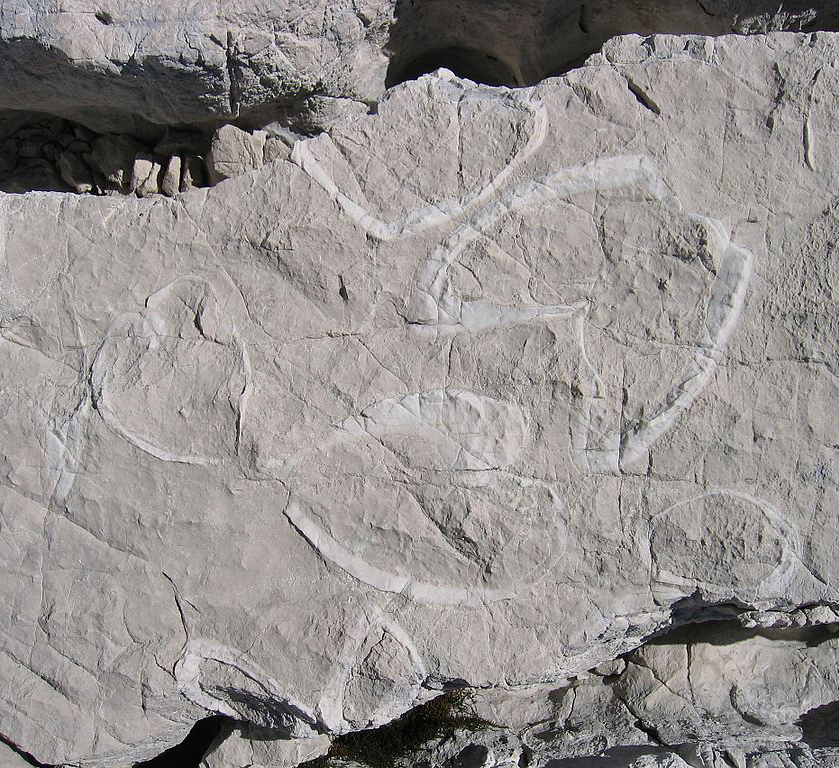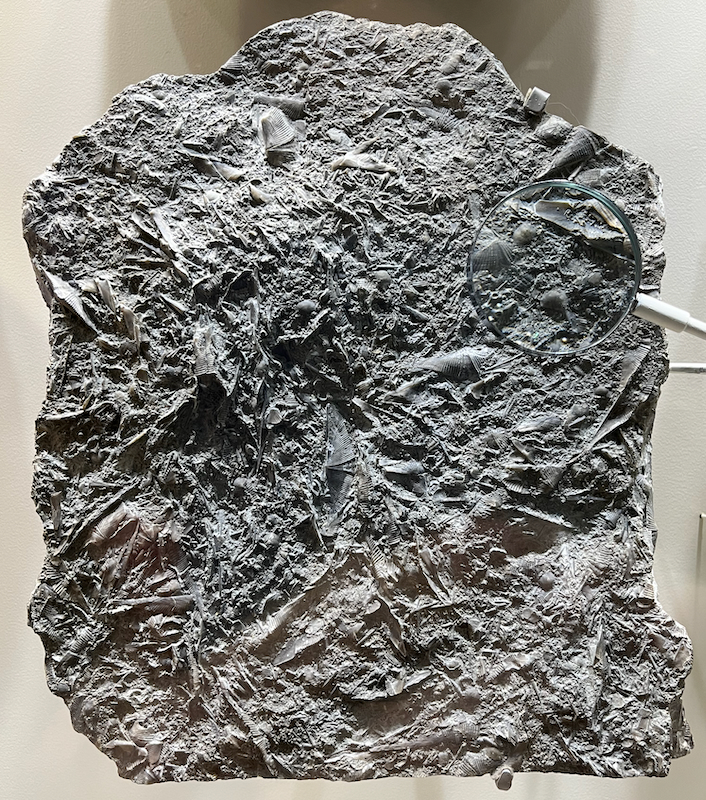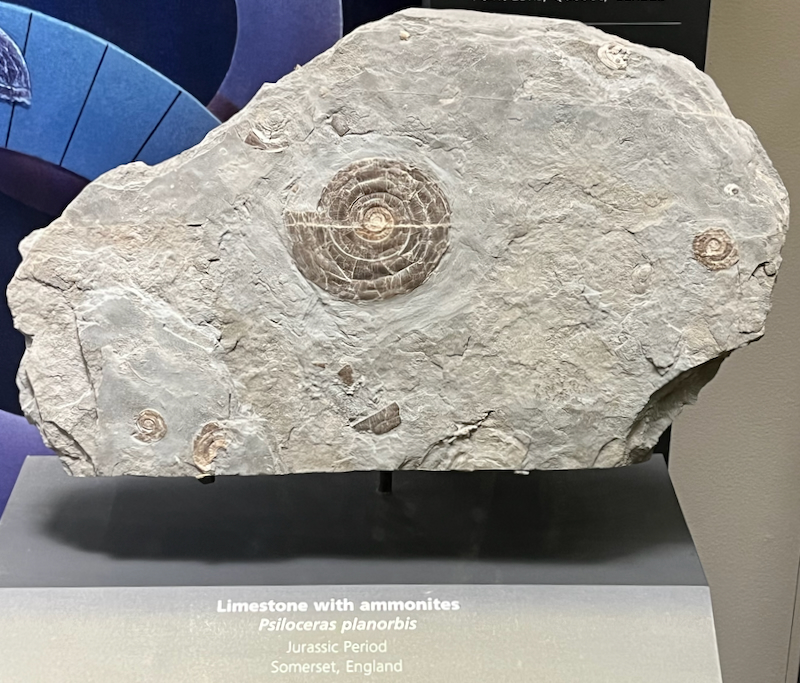Limestone
As mentioned in the general information about rocks, limestone is mostly made of calcite. It’s a sedimentary rock, and in this case the sediments are mostly pieces of microscopic plankton, seashells, coral, and other sea creatures, and those pieces are mostly made of calcite. Limestone forms from layer after layer of these sediments deposited over millions of years in ancient shallow seas. In addition, usually limestone includes a small amount of magnesium, which helps cement the sediments together to make a hard stone. If it doesn’t have any magnesium (or extremely little), you get chalk, a calcite-only type of limestone that’s pretty soft. Along with the small pieces, whole sea creatures, other animals, and plants that were embedded in the sediments millions of years ago can be found very nicely preserved as fossils in the limestone. It’s used in the construction of buildings, stone walls, stone sidewalks, etc., and sometimes you’ll see fossils in them. In fact, it’s one of the favorite kinds of stones for builders to use for such things as the federal buildings in Washington, DC. Along with using it in construction, limestone is ground up to spread on farmland to help make soil less acidic, and it can be heated to produce an industrial chemical called lime that’s used for making steel and some construction materials. Limestone is also the kind of rock where most giant caves form, because it can be slowly dissolved by weak acids such as rainwater, eventually creating huge hollow areas. Limestone on the surface can be dissolved too, and areas that have a lot of geologic features caused by this dissolving are called “karst landscapes.”
| Formula | Group or Type | Shape | Hardness | Specific Gravity | Streak | Luster |
|---|---|---|---|---|---|---|
| — | — | — | 3–4 | 2.2–2.9 | — | — |


